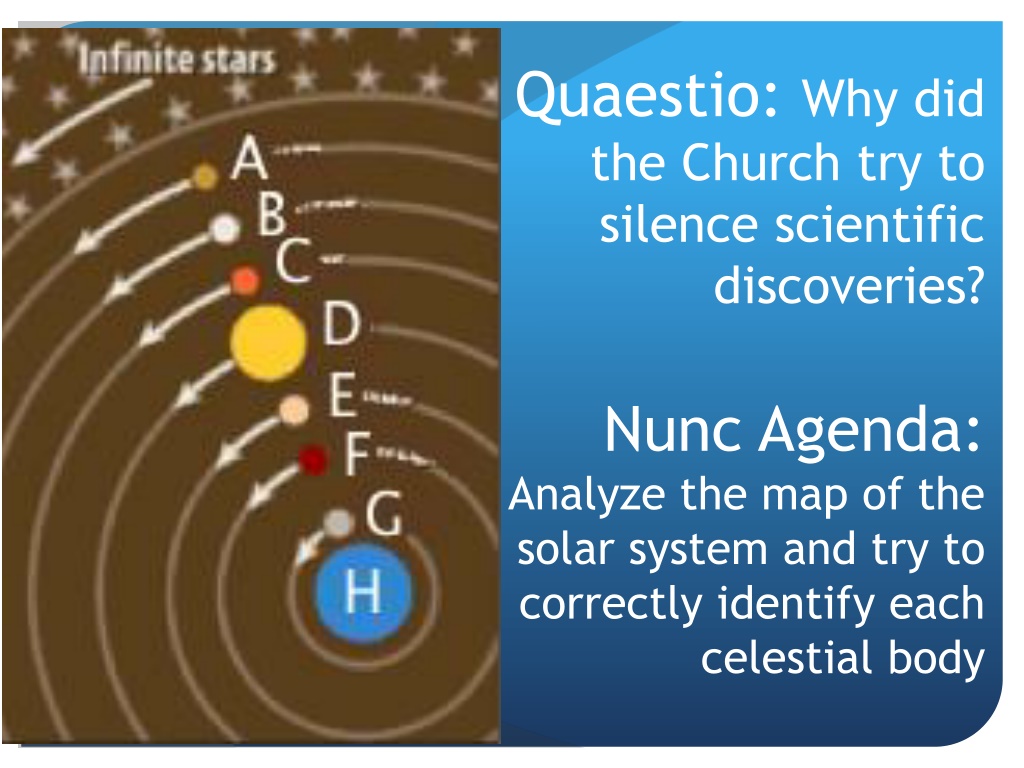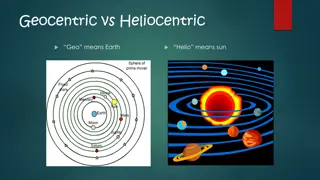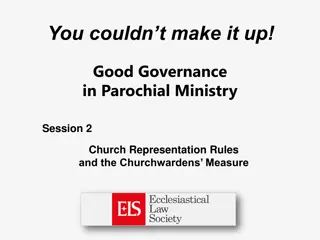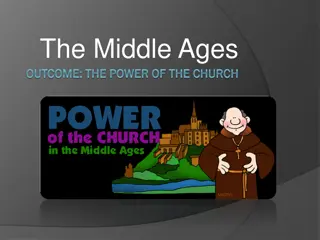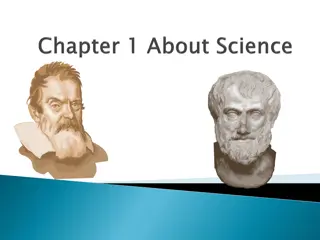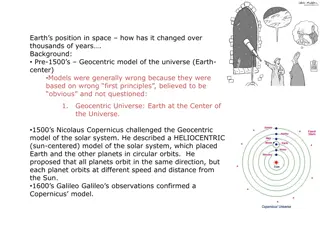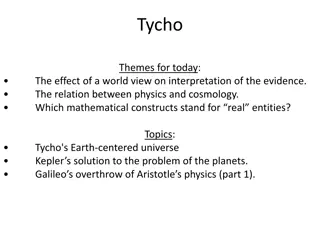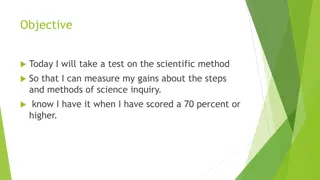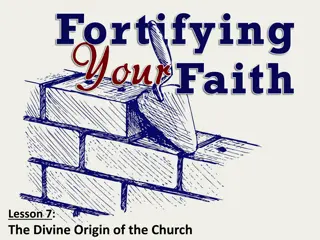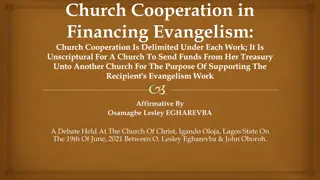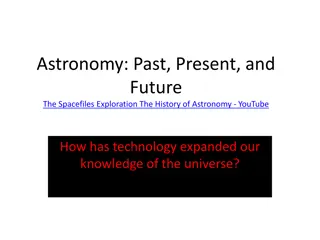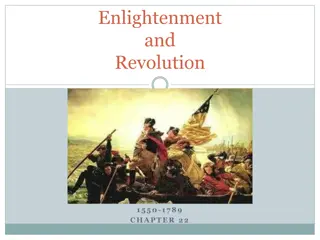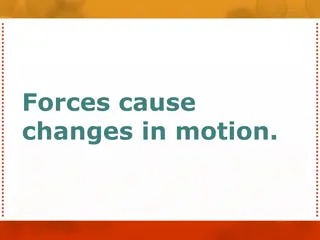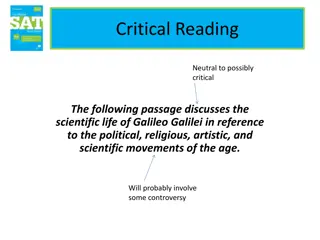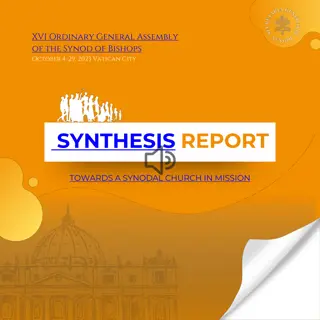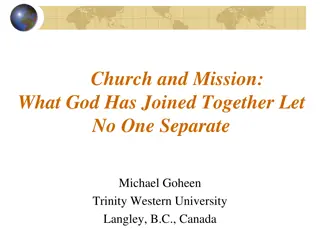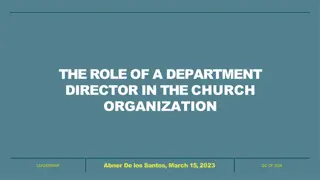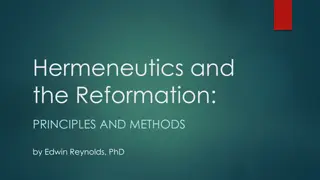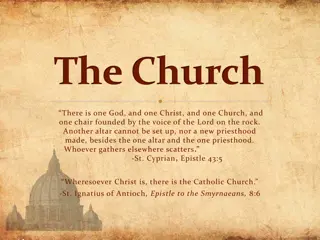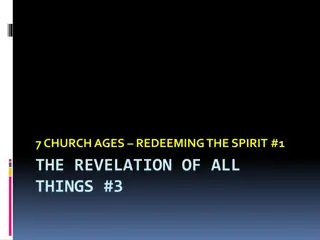Evolution of the Heliocentric Model: Science vs. Church
The Church historically backed the Geocentric Model, placing Earth at the center of the universe based on biblical interpretations. However, trailblazing astronomers like Copernicus, Brahe, and Kepler challenged this notion by proposing the Heliocentric Model with the Sun at the center. This shift led to significant scientific breakthroughs but also clashed with religious doctrine, sparking conflict between science and the Church over cosmological beliefs.
Download Presentation

Please find below an Image/Link to download the presentation.
The content on the website is provided AS IS for your information and personal use only. It may not be sold, licensed, or shared on other websites without obtaining consent from the author. Download presentation by click this link. If you encounter any issues during the download, it is possible that the publisher has removed the file from their server.
E N D
Presentation Transcript
Quaestio: Why did the Church try to silence scientific discoveries? Nunc Agenda: Analyze the map of the solar system and try to correctly identify each celestial body
Classical philosophers like Ptolemy and Aristotle believed that Earth was center of universe
This model is called the Geocentric Model of the Universe
The Church supported the Geocentric model based on passages from the Bible, insisting that EVERYTHING revolved around the Earth, which did not move.
1514- Polish Astronomer Nicolaus Copernicus realized that the way planets appeared to move in the sky did not make sense with the geocentric model
He proposed the heliocentric model, with the sun at the center, to explain why the planets appeared to move as they did, and found that the mathematical calculations worked!
Copernicus was not the first to propose the sun-centered theory: 200 BCE- Greek Astronomer Aristarchus suggested the Sun was unmoving at the center of the universe 476-550 CE- Indian Astronomer Aryabhata theorized that Earth spins on its axis 800s CE- Afghan Muslim Astronomer Al-Balkhi wrote that the planets move in orbits around the sun
Danish Astronomer Tycho Brahe recorded observations of the movements of heavenly bodies, and after his death, German astronomer Johannes Kepler used Brahe s data to calculate the orbits of planets revolving around the sun. Tycho Brahe Johannes Kepler
Until Italian Astronomer Galileo Galilei used a telescope (new Dutch invention for sighting enemy ships) to observe four moons in orbit around Jupiter, which disproved the geocentric belief that everything in the heavens orbited the Earth.
Galileo promoted the Heliocentric Model, which the Church considered heresy (contradicting Church teaching), and claimed that the verses in the Bible that say the Earth cannot move had been misinterpreted, which violated the Council of Trent (only Church can interpret). The Roman Inquisition banned books by Galileo and put him on trial.
Classwork: Read about the trial of Galileo, and the letters written between Galileo and Kepler, and answer the corresponding questions
Been there Done that! Aristarchus of Samos (200 BCE) Archimedes, wrote: Aristarchus brought out a book consisting of certain hypotheses. . . . the fixed stars and the Sun remain unmoved, and that the Earth revolves about the Sun in the circumference of a circle, the Sun lying in the middle of the orbit. added that according to Aristarchus in contradiction to the common account of astronomers, the universe is many times larger than generally assumed by astronomers, and the fixed stars are at an enormous distance from the Sun and its planets
Been there Done that! Vedi Sanskrit texts written in ancient India Yajnavalkya (c. 9th 8th century BC) recognized that the Earth is spherical and believed that the Sun was "the centre of the spheres" "The sun is stationed for all time, in the middle of the day. [...] Of the sun, which is always in one and the same place, there is neither setting nor rising." Indian astronomy - Aryabhata (476 550) developed planetary model in which the Earth was taken to be spinning on its axis and the periods of the planets were given with respect to the Sun.
Been there Done that! Islamic Astonomy 9th century Afghan astronomer Ja'far ibn Muhammad Abu Ma'shar al- Balkhi developed a planetary model in which his orbital revolutions of the planets occur only in the heliocentric theory Nicholas of Cusa (1401 1464) German cardinal of the Roman Catholic Church suggested Earth revolved around Sun, and each star a distant sun with its own planets and inhabitants
